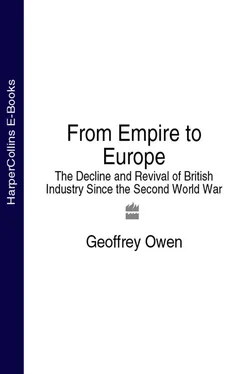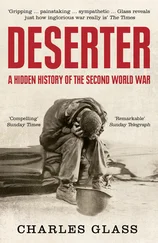By this time there was a range of commodities – textiles, coal, iron, machinery – of which Britain was the world’s largest and lowest-cost producer. In these circumstances mercantilist policies were not only unnecessary, but positively harmful to the continuing prosperity of exporters. They needed access to a wider range of markets than the colonies could provide, but this was only possible if the importing countries were free to export their food and raw materials to Britain. As long as British agriculture was protected against import competition, exports of British manufactures were held back. This conflict of interests formed part of the battle between manufacturers and landowners over free trade, culminating in the repeal of the Corn Laws in 1846.
The free trade controversy marked the emergence of the urban middle class as a powerful force which had to be integrated into the political system. Henceforth the aristocrats, if they were to hold on to the reins of power, had to govern with the consent of the industrial bourgeoisie. Protection was abandoned because the ruling class accepted, or at least acquiesced in, ‘the middle-class view that one species of wealth, namely passive property in land, had no right to abuse its political power to exact a toll from another, namely active capital in industry and commerce’. 8Of the two main political parties, the Liberals were the vehicle through which manufacturers and merchants pursued their campaigns for free trade and parliamentary reform. But, once the argument over the Corn Laws issue had been settled, it was not long before the Conservatives, under Disraeli, came to terms with free trade. 9The principles on which the economy should be run were broadly accepted by both parties.
A more serious threat to political stability came from the working class. As the shift of labour to the factory gathered pace, there was sporadic resistance from handloom weavers and other workers whose skills were being made obsolete. After the end of the Napoleonic wars working-class resentment over working conditions and the lack of political representation took a more violent form. The Chartists, whose influence was at its peak in the 1830s and 1840s, contained a faction which believed in physical force as a means of changing society. But Britain never came close to revolution. Timely concessions to labour interests (including legislation to improve working conditions in factories), together with the prosperity of the mid-Victorian age, helped to bring about what Harold Perkin has called a ‘viable class society’. 10The radicalism of the Chartists gave way to ‘New Model’ trade unions, formed by craftsmen and other skilled workers who constituted the so-called aristocracy of labour. In the industries where these unions gained a firm hold, such as textiles, iron-making and engineering, most employers came to accept that well-organised trade unions could contribute to the stability of the workplace. While disputes over wages and working conditions continued, union leaders and employers shared many of the same assumptions, including a belief in free trade. Both of them saw the Liberals as their natural allies.
Thus, despite the social strains resulting from industrialisation, there was no political upheaval which might have halted the growth of British industry. Overseas, the long period of peace which followed the Battle of Waterloo allowed British manufacturers to consolidate their position in international trade. A rising proportion of British exports during this period went to the primary producing countries which supplied the food and raw materials that Britain needed. These links were strengthened by the financial, commercial and shipping services which Britain, through the merchants and traders of the City of London, was well equipped to provide. Britain was the world’s banker and clearing house as well as its workshop, and supplied most of the capital with which the primary producing countries built up their mines, their ports and their railways. Earnings from overseas investments and commercial services were essential to Britain’s prosperity, since they offset a growing deficit in goods.
As a free-trading country Britain was the natural outlet for exports from other European countries, and to a lesser extent the US, as they built up their industries. For Richard Cobden, chief architect of the repeal of the Corn Laws, free trade was in everyone’s interests, not just those of Britain, and he tried to persuade other governments that the abolition of tariffs would create the conditions for an era of peace and prosperity in Europe. 11But protectionist pressures, aggravated by the economic depression which began to affect most parts of Europe in the 1870s, proved too strong. Germany’s decision to raise its tariffs in 1879 was part of a general retreat into protectionism throughout Western Europe, which continued up to and beyond the First World War.
In the 1870s Britain was still by far the largest exporter of industrial goods, accounting for about 40 per cent of world trade in manufactures, but competition was beginning to cause concern. The old rival, France, with its limited natural resources, slow-growing population, and predominantly agricultural economy, had slipped back, but a serious threat to British supremacy was coming from Germany and the US. A second industrial revolution was under way, and in some of the new fields – electricity, the internal combustion engine, organic chemistry – the newcomers, not Britain, were taking the lead.
The Rise of American Industry
In the US, as in Britain, the first factory-based industry was cotton textiles, based on water power and located mainly in New England. The use of steam power increased after the Pennsylvania coal fields were opened up in the 1830s, but it was not until the construction of the railway and telegraph networks in the 1840s and 1850s that America’s two great advantages as a manufacturing country, the wealth of its raw materials and its huge home market, could be exploited on a larger scale. The railway boom gave a boost to the growth of the iron industry, and encouraged the exploitation of more distant natural resources, notably the Mesabi iron ore mines of Minnesota. The US was richly endowed with other minerals, including oil; the first oil strike was made at Titusville, Pennsylvania, in 1859.
To make full use of these assets the US needed a combination of rising demand, entrepreneurial skill, and supportive policies and institutions. 12The population, swollen by immigration, rose much more rapidly than Britain’s between 1870 and 1913 (TABLE 2.1). But the difference with Britain was not just a matter of size. Incomes in the US were more equal and consumer tastes more similar. These conditions favoured the manufacture of standardised goods for a mass market, and entrepreneurs had an incentive to design machinery which would permit low-cost, high-volume production. A well-known example was the Bonsack cigarette-making machine, introduced in 1884, which could turn out 125,000 cigarettes a day; the best that a skilled worker could do was 3,000 cigarettes a day. 13Manufacturers of branded consumer goods like tobacco and soap were among the first to build sales networks throughout the US. Some of the metal-working industries adopted what became known as the American system of manufactures, a way of making standard machinery from interchangeable components. Pioneered in government armouries for the production of small arms, it was taken up by manufacturers of sewing machines, typewriters and other products for which there was a large, homogeneous demand. The greatest triumph of the American system, achieved by Henry Ford shortly before the First World War, was the mass-produced automobile. 14
TABLE 2.1 Population growth 1870–1913
(in millions)
Читать дальше












